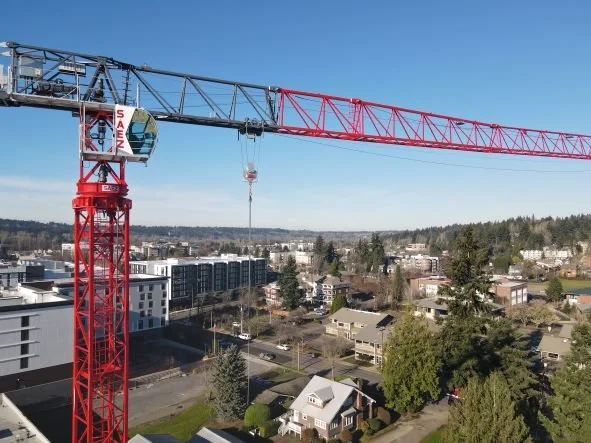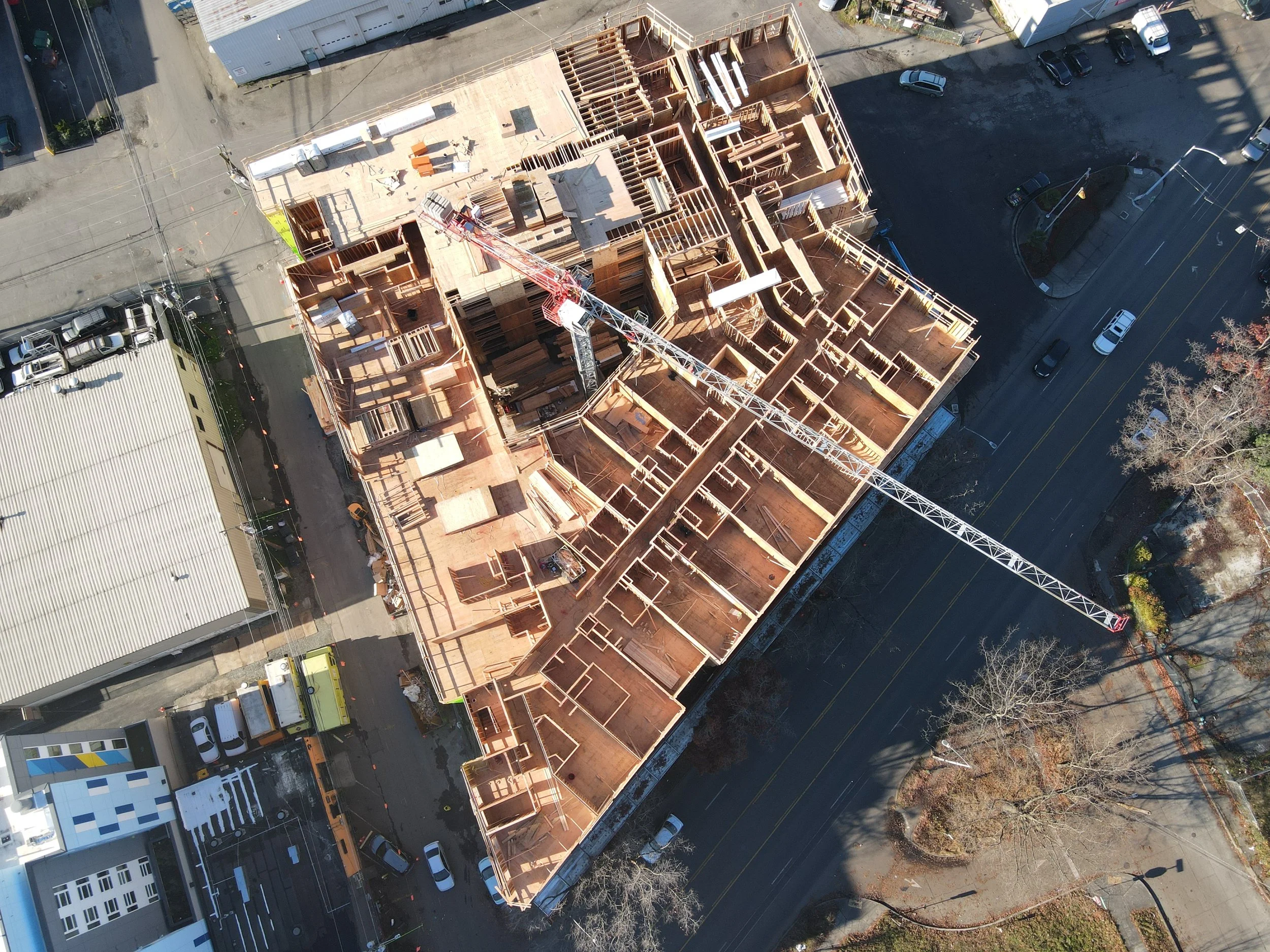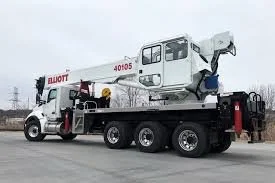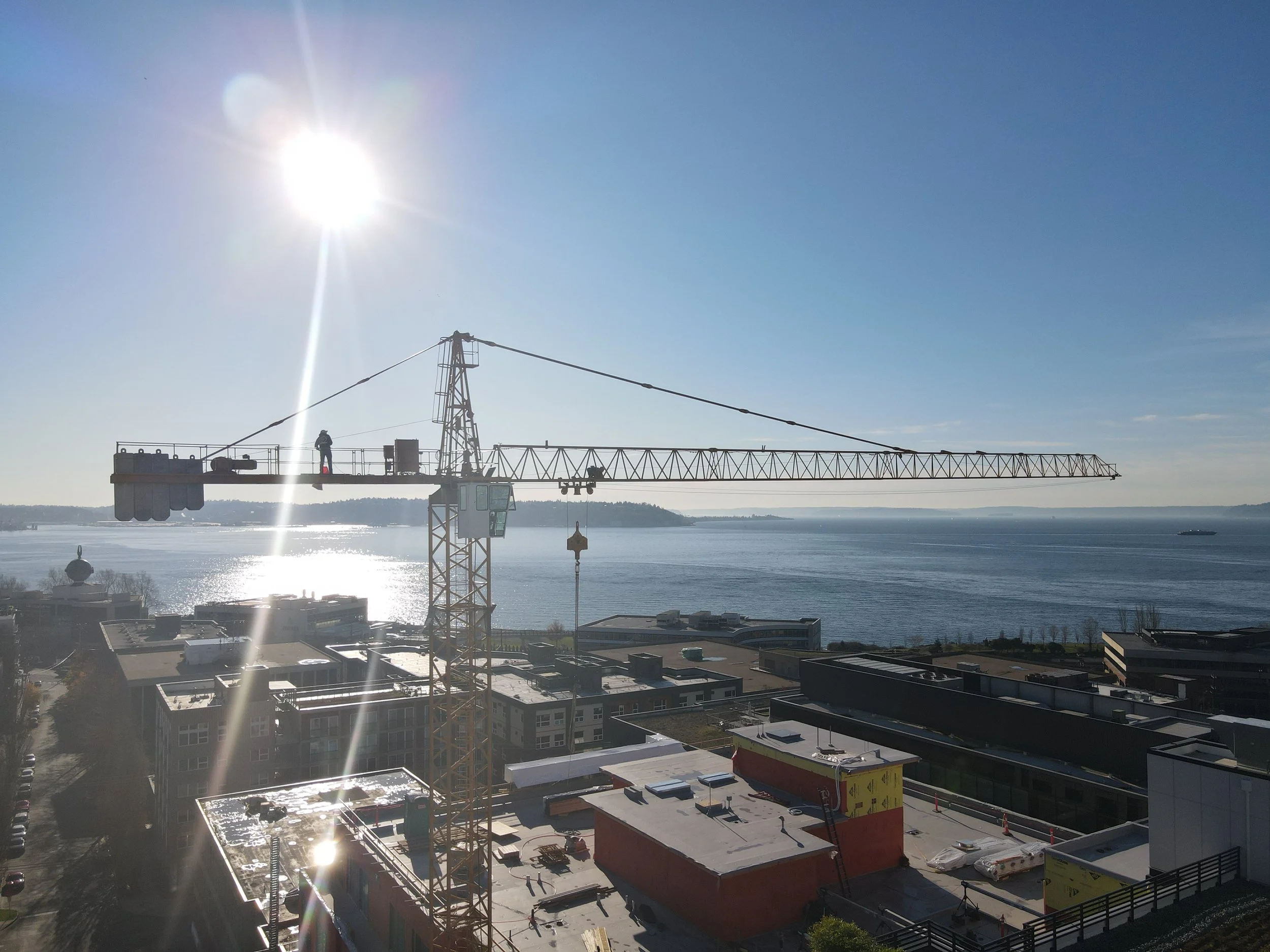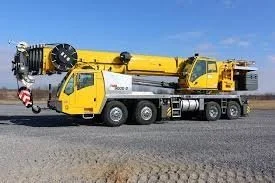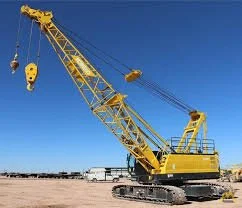The Types of Cranes in Construction You Need to Know
Cranes are essential machines in construction and industry for lifting and moving heavy materials. This article covers the main types of cranes in construction—static and mobile. You’ll learn about their unique features, applications, and how they contribute to efficient construction work.
Saez TLS65 6 ton (13230 lbs) Flat Top Tower Crane
Key Takeaways
Construction Cranes are categorized into static and mobile types, each serving specialized purposes based on project needs.
Stationary cranes, such as tower and overhead cranes, offer stability for long-term projects, while mobile cranes provide versatility.
Effective crane selection involves assessing project requirements, considering factors like load weight, site conditions, and cost implications to ensure operational efficiency.
Understanding Fixed and Mobile Cranes
Cranes are pivotal in construction, broadly categorized into static and mobile types. Static cranes remain stationary, perfect for long-term projects like high-rises. Conversely, mobile cranes move across sites and between locations, offering versatility.
Recognizing the differences between static and mobile cranes helps in understanding their specialized uses. Static cranes, anchored to the ground or buildings, offer stability and can lift heavier loads to greater heights. Wheeled and tracked can quickly relocate, essential for projects needing frequent movement and adaptability.
Tower Cranes are fixed and can’t move from their location without another crane. Unless they are on a traveler base. This is uncommon in the US.
Static Cranes
Static cranes, designed for long-term construction, are fixed to the ground or buildings, ensuring maximum stability during lifting. Their design handles loads and reaches impressive heights, making them ideal for large-scale construction. Tower cranes, assembled on-site, are used for extensive tasks like building skyscrapers.
These cranes can be anchored to the ground or structures for added stability. Tower cranes grow in height by adding new sections with a hydraulic jacking frame, reaching up to 305 feet unsupported. Their fixed nature limits them to a single area unless mounted on travelers for movement along rails.
Boom Truck that can roll down the road
Mobile Cranes
Unlike static ones, mobiles move around job sites and between locations. Often mounted on trucks or purpose-built frames like all-terrain cranes, they offer enhanced versatility. Types of mobile cranes include truck-mounted cranes, which are road-legal and combine mobility with significant lifting power.
Their flexibility makes mobile cranes indispensable for infrastructure projects requiring diverse lifting tasks and navigation across challenging terrains.
Little guy tower crane - Liebherr 100lc
Tower Cranes
Tower cranes, giants of construction, are essential for building tall structures. With a vertical mast and an outstretched jib, they lift heavy materials to great heights. A tower crane comprises a vertical mast and a horizontal jib that carries the load. The jib enables horizontal and vertical movement, with a 360-degree rotation around the mast for versatile operation. Despite their capabilities, tower cranes are limited to a single area unless on a traveler base and rails.
Self-erecting tower cranes, designed for quick assembly, are suitable for projects with tight spaces and time constraints. They are inexpensive to erect and don't require a foundation. These savings work well for projects until about the 9th month where smaller tower cranes can start to become less expensive due to lower rental and purchase costs.
Luffing Jib Tower Crane
A tower cranes jib’s rotation capability allows for precise material placement within the construction site. Luffing jib cranes, with greater flexibility and a smaller out of service rotation radius. They are also used to clear buildings or respect property rights. These design variations cater to different project needs, enhancing their utility.
Tower cranes, engineering marvels, provide the height and hoisting capacity for constructing some of the world’s tallest buildings. Their adaptability and growth make them indispensable in modern architecture. A tower crane can make as many as 17 lift cycles per hour where no mobile crane could keep up with this pace.
Essential Mobile Cranes for Construction
Mobile cranes offer the flexibility and maneuverability needed for diverse hoisting operations. Their ability to navigate various terrains and perform diverse tasks makes them indispensable in construction.
Explore some essential mobile cranes vital in construction.
You can buy the crane separate from the truck. It’s a boom truck
Truck-Mounted Cranes
Boom trucks consist of a carrier (truck) and a boom (arm). They combine the mobility of a truck with the lifting power of a crane, making them highly versatile for various tasks. With a load capacity of 0 to about 100 tons, they are suitable for smaller-sized hoisting operations.
Truck Crane. Purpose built frame. Counter weights. 75 to 115 version.
Truck-mounted cranes use counterweights and outriggers to stabilize while carrying loads. They can execute a ‘pick and carry’ function for transporting loads across sites and be rapidly deployed, enhancing efficiency and reducing downtime. They have a purpose built frame and motor designed for life as a crane, where a boom truck commonly is made of a truck combined with a crane. Truck cranes range up to 120 tons in capacity before they have to become All Terrain Cranes.
Grove 7550 with something special going on in axles and the boom.
All Terrain Cranes are the 4 to 9 axle cranes we have all seen on the road doing a top speed of about 50 miles per hour because they are so heavy. They are designed to have 26,000 lbs per axle which puts some of them over 200,000 lbs driving down the road. This is why they have a carrier in the back called a Dolly. this carries the boom weight in the back as much as possible taking it off of the main axles up front. Most road limits in the US try to keep us to 22,000 lbs per axle.
All Terrain Cranes have one purpose. To lift big things. Tonnages range from 100/115 tons in 4 axle cranes to 750/900 tons in 9 axle cranes. There are exceptions. There is a 1200 ton crane that is rare to see with a hydraulic boom. Then there is a Chinese version for wind farms that is 4000 tons and just absurd for anything outside of wind farms or nuclear work.
All Terrain Cranes commonly have 197' of main boom unless they are called a long boom. Most of those get to 262'. If you need to reach higher, they commonly add three types of fixed jibs. Or they can add on luffing jibs. The total range on the largest cranes get close to 500'. Setting up a crane like this with lots of weight and jib would be $70,000 or more in most markets. Hourly rates would be between 500 to 1200 or so per hour for large "AT" cranes.
Telescopic Crawler
Crawler Cranes
Crawler cranes, the heavyweights in mobile cranes, excel in lifting substantial loads during early construction phases, especially on uneven ground. As the largest type of mobile cranes, they are ideal for significant projects requiring heavy lifting. With a lifting capacity exceeding 2500 tons, crawler cranes handle the heaviest loads with ease.
Some crawler cranes have attached telescopic arms to enhance their versatility. This is a more modern approach to work in rough terrains. Mounted on large vehicles with treads, they move over rough terrain effectively without outriggers.
100 to 150 ton Lattice Crawler
The lattice boom design allows them to lift heavier capacities compared to other boom types. A limitation of crawler cranes is their limited turning capacity, affecting maneuverability in tight spaces. Despite this, their stability and lifting power make them indispensable for large-scale projects. If you have a project that needs to lift heavy items, the larger lattice boom 300 ton cranes have massive capacities and can get the work done with some speed. When you start to go larger, the speeds slow down, but the ability for big lifts climbs to the sky.
Rough Terrain Cranes
Rough terrain cranes are engineered to operate effectively in challenging environments like muddy conditions. Typically smaller and lighter than crawler cranes, a rough terrain crane is easier to maneuver in confined spaces.
On-site assembly involves stabilizing rough terrain cranes with outriggers. An on-tire chart allows for slow movement over the front, with the motor acting as secondary ballast.
These construction cranes are crucial for job sites needing robust lifting in difficult terrains.
Floating Cranes
Floating cranes, or crane vessels, are crucial in marine projects like building ports or oil rigs. Types of floating cranes include sheerleg and semi-submersible, each designed for specific water-based lifting tasks. These cranes are the largest in the world, with some, like the Hyundai 10000, having a lifting capacity of 10,000 metric tons. A floating crane can significantly enhance the efficiency of these operations.
They perform slow, methodical lifts, ballasting as they lift, making the process barely noticeable. Their immense capacities and water stability make them indispensable for marine construction.
Carry deck Crane
Carry Deck Cranes
Carry deck cranes are designed for easy maneuverability in tight spaces, suitable for small construction sites and industrial plants. Placed on a four-wheel deck, they transport materials by lifting and loading them onto the deck. With a maximum capacity of 25 tons, a carry deck crane is ideal for handling lighter loads in confined spaces. most of them are 8 tons or less in capacity despite the number of larger ones growing these days.
They offer easy navigation and simple setup, often referred to as ‘neck breakers’ due to limited visibility from the cab. Despite their small size, carry deck cranes are highly effective for specific lifting tasks in industrial environments.
AT with Luffer Attachment assembling tower crane
Telescopic Cranes
Telescopic cranes, known for their hydraulic boom, can change length offering versatile height options. The hydraulic mechanism allows quick boom length adjustments, advantageous in scenarios needing variable height and reach.
They can significantly extend their reach, offering adaptability and enhancing operational efficiency. Their quick height adjustment makes them suitable for various construction projects requiring different lifting heights and capacities.
Some of these booms are known as power booms. Others are known as pinned booms. The power booms are most common on smaller cranes like RT's. Even with a load on, you can push out more boom to gain reach. Large AT Cranes need to push from the bottom and pin each section in place. The day needs to be planned out well or you could lose 30 minutes in time pulling all of the boom back in to reconfigure. The advantage in pinned booms is less weight, and stronger booms with less maintenance.
Assessing Project Needs
Understanding your construction project’s specific requirements is crucial for informed crane selection. Factors to consider include the project terrain, ground conditions, site size, and weight of materials. It is crucial to align the material weight and size with a crane’s capacity to avoid stability or structural issues.
The weight of the load being lifted is not the only consideration; the height and radius also play a significant role in crane selection. Proper crane selection can lead to cost savings by reducing delays and resource inefficiencies. Site accessibility and the duration of the project can dictate whether a quick setup or sustained presence from a crane is necessary.
Long-term operational costs should be weighed against initial crane rental or purchase expenses. By thoroughly assessing project needs, you can ensure efficient and cost-effective crane operations.
Consulting Experts
Expert consultations can enhance safety and operational efficiency in crane use. Consulting with crane operators and industry experts is vital for ensuring safe and efficient crane usage. Their advice can optimize crane selection, operational safety, and project outcomes.
Cost Considerations
Cost considerations are a critical aspect of crane selection and usage in construction projects. Cranes designed for lighter loads typically offer more flexibility and ease of transport, which can influence cost decisions. Budget constraints often require careful planning to ensure that crane rental or purchase aligns with project requirements. It is important to balance the need for a specific crane type with the financial resources available to avoid overspending.
Getting a crane on site can easily exceed $50,000 for larger lifts, and the operational costs are equally significant. It is common for crane and crew costs to surpass $500 per hour, with larger cranes pushing over $1,000 per hour, not including mobilization fees or any support personnel on site.
Understanding these cost factors enables better financial planning and resource allocation for construction projects.
Summary
In summary, understanding the various types of cranes used in construction is crucial for selecting the right equipment for your project. Static cranes, such as tower cranes, provide stability and are ideal for long-term projects requiring significant height and load capacity. Mobile cranes, including truck-mounted, crawler, rough terrain, floating, carry deck, and telescopic cranes, offer versatility and adaptability across different job sites and terrains.
By assessing project needs, consulting experts, and considering cost factors, you can ensure efficient and safe crane operations. The right crane selection not only enhances project efficiency but also contributes to overall cost savings and successful project completion. Armed with this knowledge, you are better equipped to tackle any construction challenge with confidence.
Frequently Asked Questions
What are the main differences between static and mobile cranes?
The primary difference between static and mobile cranes lies in their mobility; static cranes are fixed for long-term heavy lifting, while mobile cranes can traverse job sites, allowing for versatile lifting across various terrains. Therefore, the choice between them hinges on the specific project requirements.
What types of projects are tower cranes best suited for?
Tower cranes are best suited for constructing tall buildings and large-scale projects, as they offer stability, height adaptability, and substantial load capacity. Their design makes them ideal for urban construction environments where height is paramount.
How do crawler cranes differ from rough terrain cranes?
Crawler cranes are superior in heavy lifting on uneven surfaces and have greater capacities, while rough terrain cranes are designed for mobility in challenging conditions but are generally smaller and more maneuverable.
What factors should be considered when selecting a crane for a construction project?
When selecting a crane for a construction project, it is crucial to consider factors such as project terrain, ground conditions, site size, weight of materials, height and radius of the lift, site accessibility, project duration, and overall cost. A thorough assessment of these elements will ensure efficient and safe crane operations.
Why is consulting experts important in crane selection and usage?
Consulting experts is crucial in crane selection and usage as it significantly enhances safety and operational efficiency. Their guidance ensures compliance with safety standards and optimizes crane selection, leading to improved project outcomes.


